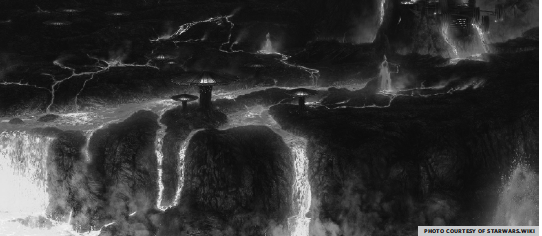
You don’t need to be studying art history or cultural theory to enjoy and understand Camille Paglia’s Glittering Images: A Journey Through Art from Egypt to Star Wars. The book is a critical exploration on 5,000 years of art, written by one of the foremost cultural thinkers and is an easy read.
Utilizing wit, storytelling, and artistic analysis, Paglia provides a fundamental education for anyone with a lingering interest in visual arts culture.
Paglia is an accomplished cultural writer; her book Break, Blow, Burn, which examines short fiction pieces, is used as a required reading in some creative writing courses.
She has a successful bibliography critical of literature, art, and film.
The book calls for a re-education in how we see our world, which is oversaturated with a “torrential stream of flickering images.”
She asks us to slow down and consider the images that our culture surrounds us with.
The study and appreciation of art, she argues, is necessary to help us focus amidst the constant bombardment of commercial visual distractions.
Glittering Images is an inventory of major art movements and exemplary works, each individually broken down with a short written section.
This makes the book a very simple read that can be picked up again at any point. Many of the artworks mentioned in the book are not immediately recognizable, like Grosz’s “Life Makes You Happy!” and Hardrick’s “Xenia Goodloe.” Chances are you haven’t heard of these pieces, but you’ve probably seen Andy Warhol’s “Marylin Diptych” or the grid-like compositions of Piet Mondrian.
Paglia combines famous and little-known artworks, particularly to avoid repeating herself from her earlier book Sexual Personae: Art and Decadence from Nefertiti to Emily Dickinson, an equally important read on female sexuality in the arts.
Paglia believes trends are cyclical, an idea that means past ideas will repeat. For example, just think about the comeback of jumpsuits!
She creates a journey for us to follow, from Egypt, to Rococo, to George Lucas.
She heralds Lucas as a visionary storytelling master, prefacing his introduction with the question “Who is the greatest artist or our time?”
If you’re going to read this book, do it for Paglia’s analysis of the fight between Anakin Skywalker and Obi Wan Kenobi at the fiery pits of Mustafar in Star Wars Episode III.
She is a big fan of Star Wars. Lucas’ melding of art and technology to create an enveloping mythology garners him a place in this 5,000-year-old journey of the visual.
The historical narrative that Paglia weaves draws a clear line between the movements and works she features. “The Sea of Ice” by Caspar David Friedrich, a landscape artist, looks like a scene right out of Hoth, a wintery planet in Star Wars. But the volcanic screen caps of Revenge of the Sith could easily look like a romantic work of the sublime.
The book vehemently strikes down the application of poststructuralist theory in visual art because its abstract dealings with language do not work with the physicality of art. Artists are compared to carpenters and welders over intellectuals because they deal with the concrete and contribute to our visual culture.
Paglia’s study is entertaining without sacrificing the insightfulness of a critical selection of artworks.
Glittering Images seems thin for covering five millennia but this crash course in art explication has been curated and crafted by one of North America’s best cultural critics. Art is not elitist, and it’s not beyond your grasp simply because you don’t “get it.”
Paglia has given you a curriculum of critical cultural and artistic history in a single tome, so pick it up because in no time you’ll “get it,” and not even know it.
Tess Reid
Comics Editor


